Ancient coffins, known as Sarcophagi, often represent the great sense of artistry that our ancestors had, with colorful carvings and writings still seen and felt on every ancient Sarcophagi. Not to mention the mummifying process the ancient Egyptians used to do for their dead. The ancient Egyptians believed in the afterlife and the awakening after death. That’s why they worked hard to preserve their dead in the best way possible so that they can make it to the afterlife.
They also used to preserve the organs of the dead person inside ancient jars called canopic jars and put them with the dead along with food and other belongings all inside the burial chamber. They believed that the dead would use their belongings in the afterlife. Ancient Sarcophagi in every civilization were meant to ensure the body is buried safely, that’s why they used to decorate the Sarcophagi with spells and ancient texts. Those texts that can still be seen until now were believed to help the dead make it safely to the afterlife.
Here are the most famous and exceptionally beautiful Ancient Coffins (Sarcophagi) ever discovered worldwide.
Speaking about ancient coffins, we can’t miss the one of Tutankhamun’s, located in Egypt. Tutankhamun’s sarcophagus and tomb are the most amazing to ever be seen. He was buried inside a series of three golden coffins nested one inside the other. The three golden coffins were put inside a granite sarcophagus and surrounded by four wooden shrines. That was the largest yet most amazing coffin to barely fit into the burial chamber. Not to mention the 24 pound gold mask that was beautifully and gracefully placed over his head and shoulders, and now on display at the Egyptian Museum in Cairo.
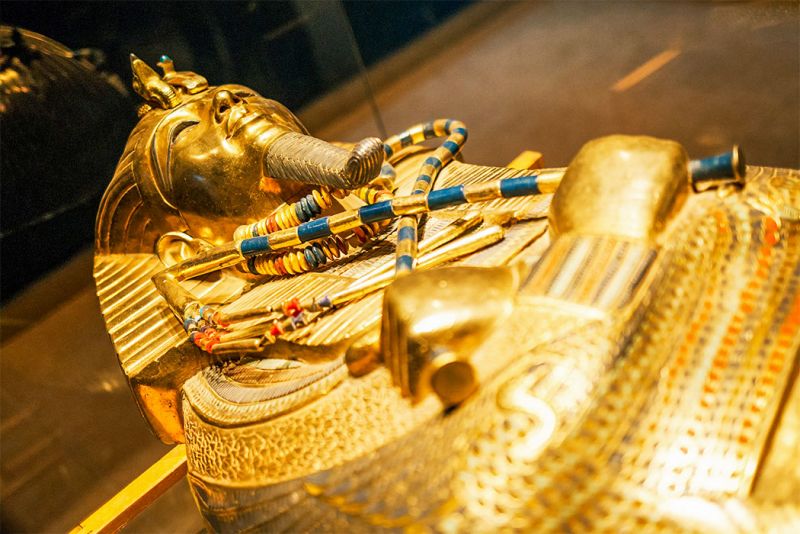
Historians believe that King Tut’s death must have been unexpected because of the small tomb size. They believe that the sudden death of the king left people with very short time to prepare for his burial. Despite the short time and the small space, The king’s tomb was filled with more than 5,000 artifacts including furniture, clothes, and other belongings to use in the afterlife. It took Howard Carter, the British archaeologist, and his team almost a decade to empty the tomb.
King Tut’s mummy is still on display inside his tomb in the Valley of the Kings in the KV62 chamber. Of course The Mummy is now preserved in a climate controlled glass box. While the collection of artifacts from Tutankhamun’s tomb will eventually be moved from the Egyptian Museum in Cairo in Tahrir Square, where they are located now, to The Grand Egyptian Museum expected to open in 2020.
You can book your Grand Egyptian Museum and Pyramids Tour Now!

In 2019, Thirty wooden coffins of men, women, and children were found in the Valley of the Kings in Luxor, Egypt. The mummies found are thought to be families of high priests. The thirty ancient Egyptian coffins are around 3,000 years old. The coffins will soon be on display at the Grand Egyptian Museum.
What makes that finding unique is that it is the biggest finding of it’s kind in almost over a century. The coffins highlight the ancient Egyptian’s belief in the afterlife with all the colorful religious writings and carvings on each of them. Also, the colors that are still beautifully seen on each coffin even after almost 3,000 years is a proof of the amazing artistry of the ancient Egyptians. Also, the book of the dead, found in each of the coffins, was believed to help the dead make it safely to the afterlife.
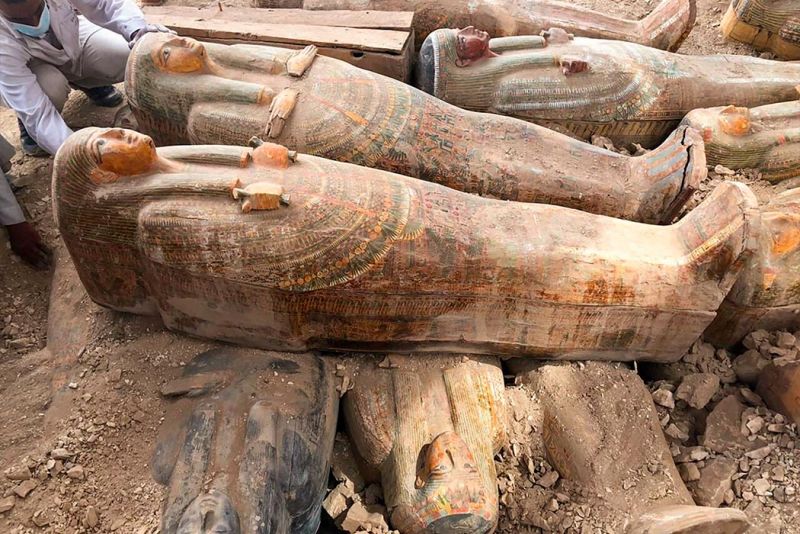
In San Pietro Italy, a breathtaking wreck of an ancient Roman ship was found underneath water. It is believed that the ship was carrying a number of marble sarcophagi dating back to the 3rd century AD. About 20 Roman coffins/ sarcophagi were found underneath water at that location, leaving historians in awe. The sarcophagi are lying about five feet deep in the waters of San Pietro in Bevagna, and about 70 meters off the beach.
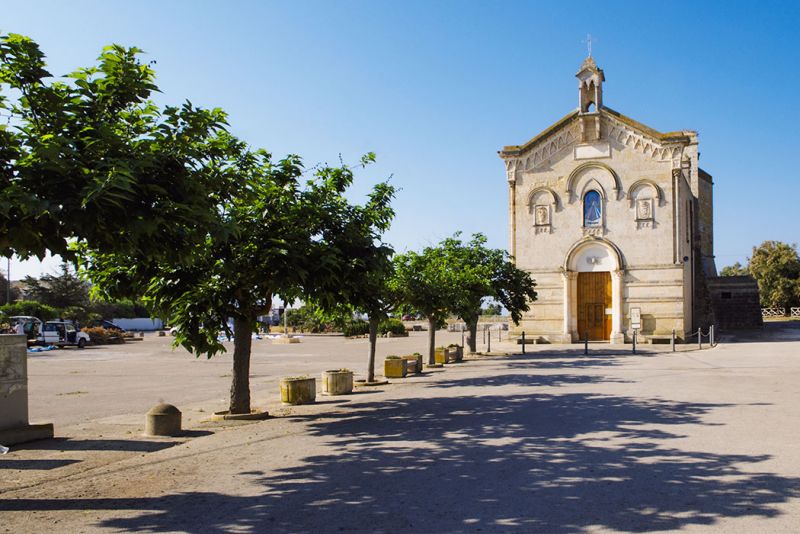
The coffins are a collection of unfinished artifacts with different sizes and weights varying from one thousand to six thousand pounds. Some of them are rectangular in shape, while the others are with rounded edges. Both types were common during the Roman Imperial age. Located nearby the shore, the sarcophagi location might be evidence that an ancient port once existed there.
Romulus and Remus were twins whom, according to history, Rome existed only because of their great efforts. The twins were found abandoned on a river’s bank shortly after they were born. They were raised by an unknown woman who found them then. After they grew up, they discovered the iconic city of Rome in 753 B.C, Romulus celebrated that discovery by fighting with and eventually killing his brother.
A shrine that researchers believe is dedicated to Romulus was excavated and revealed by the Roman Forum. Dating back to around the 6th century B.C. The shrine includes an underground chamber that contains an altar and a 55-inch empty sarcophagus. The Sarcophagus is believed to belong to Romulus.
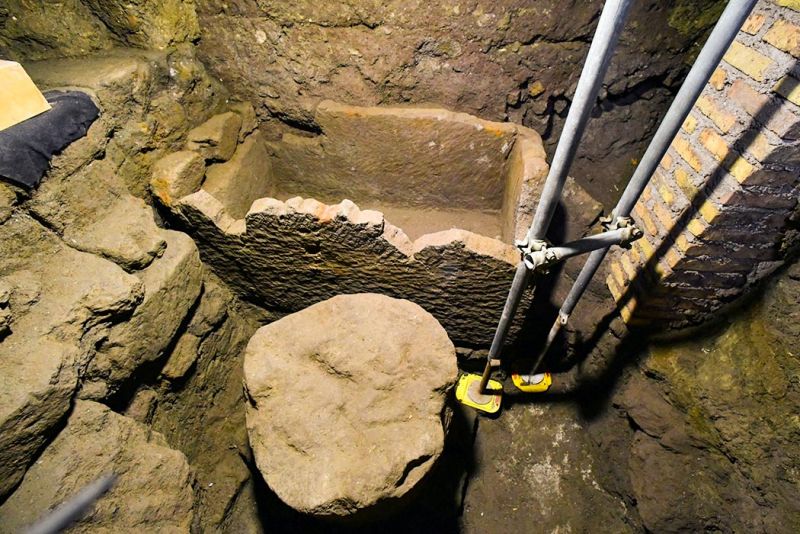
What makes Romulus so remarkable is that he was responsible for the political birth of Rome. While researchers are still not sure if this site is where Romulus was buried because of the missing body, some scholars believe that ancient Romans have put the altar atop the place where they believed Romulus was buried.
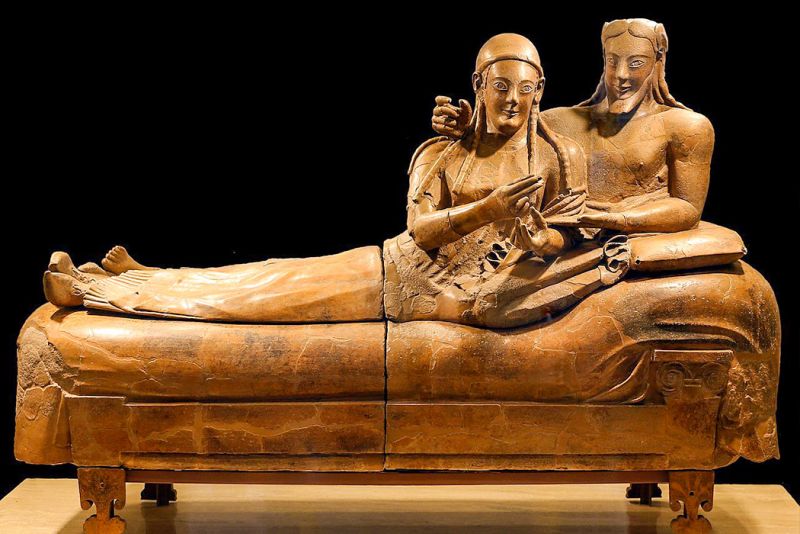
The sarcophagus of the spouses is a masterpiece sculpture, found in the ancient city of Caere, now known as Cerveteri, Italy. It is a beautifully painted human-shaped sarcophagus. It was discovered thanks to the archaeological excavations at the necropolis site of ancient Caere during the nineteenth century. The sarcophagus is now on display in Rome. It also reflects the great artwork and dedication of an art called Terracotta back then, which was the standard artwork for the decoration of the Etruscan temples. The sarcophagus also reveals some key information about the Etruscan culture and people’s customs at that period.
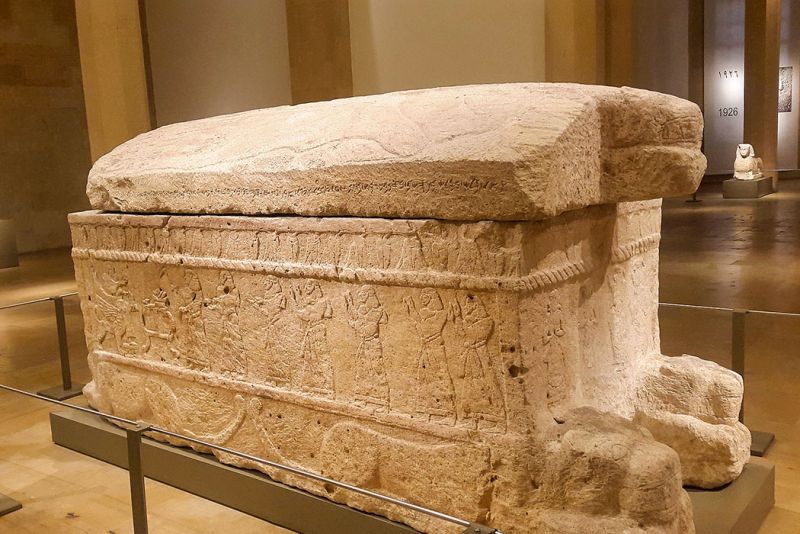
The Phoenicians are thought to have similar funeral and burial habits as the ancient Egyptians. They used to bury their dead in decorated sarcophagus made out of stone and place them in tombs cut out of rock. Personal belongings buried with the dead also showed their belief in the afterlife as the ancient Egyptians did.
The sarcophagus of king Ahiram, located at the national museum of Beirut, shows a link to the early bronze age of the Phoenician history. The tomb is believed to date back to around 1000 B.C. The sarcophagus was found during late 1923 along with a number of royal tombs from the phoenician period.
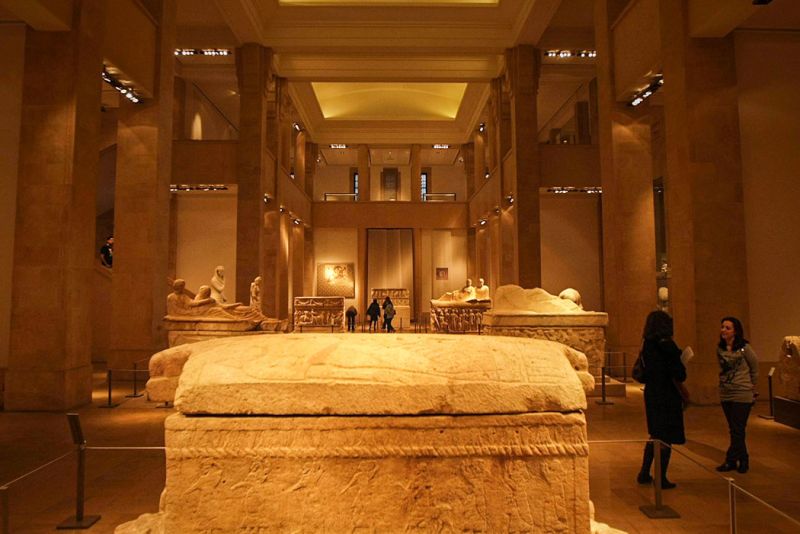
An amazing fact is that the tomb of king Ahiram was about ten meters deep and it was built in one of the oldest towns inhabited in the whole world, the town of Byblos. Another interesting fact about the tomb is the inscription which is considered as the oldest form of writing during the Phoenician period, and an example of a full form of Phoenician alphabet. The inscription was meant to keep the tomb safe from thieves.
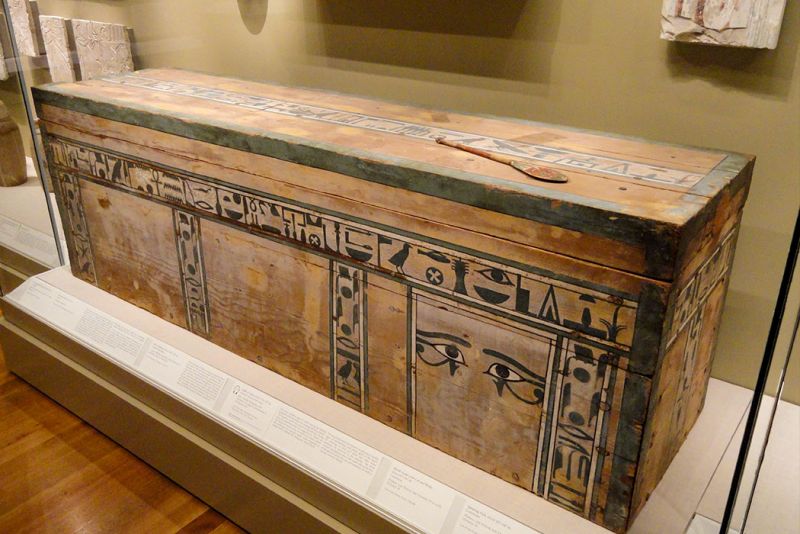
The Middle kingdom of ancient Egypt is well known for coffin texts on the interior side of coffins. These coffin texts and spells were meant to ensure that the dead will make it safely to the afterlife. Also, during the Middle kingdom, the belief in the afterlife slightly changes, as the dead were considered to manifest Osiris, the god of the dead.
Decorated rectangular shaped coffins were common until the end of the Middle kingdom. But then rectangular coffins started to be replaced with carved and human shaped coffins.
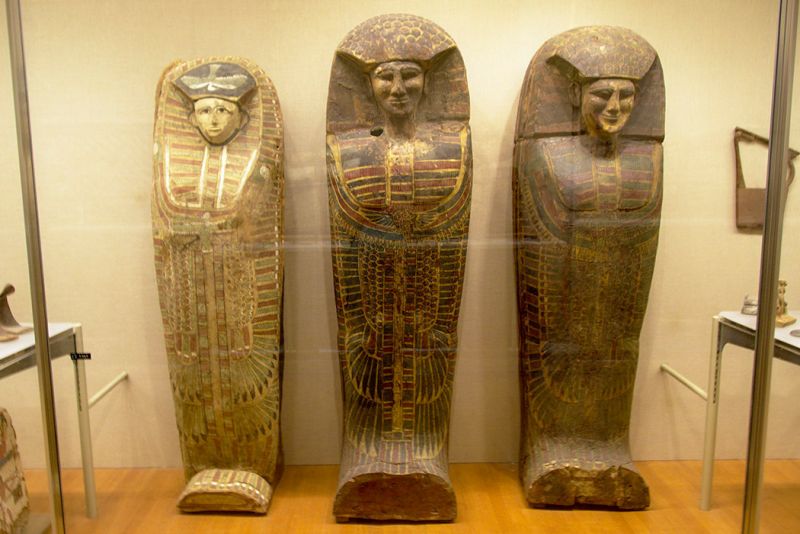
Rishi is the Arabic word for feather. It refers to the style of decorating royal and non-royal coffins. During the second intermediate period, coffins started to take the human shape with huge wings associated with Isis and Nephthys, who were winged goddesses. This style of decorating coffins also included dressing the coffin with a headdress, a collar, and sometimes a beard in order to reflect the Osiride image of the coffin’s owner.
It is highly recommended that you include a tour to witness the great artistry of ancient coffins on your trip to any of the places mentioned earlier in this article. If you are planning to visit Egypt, you can’t miss the chance to get amazed by visiting the Egyptian museum in Cairo where you can find the gold burial mask of Tutankhamun along with his burial artifacts. Also, coffins in Luxor and especially those of the Middle Kingdom that reflect great dedication that lasted until the present time.